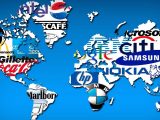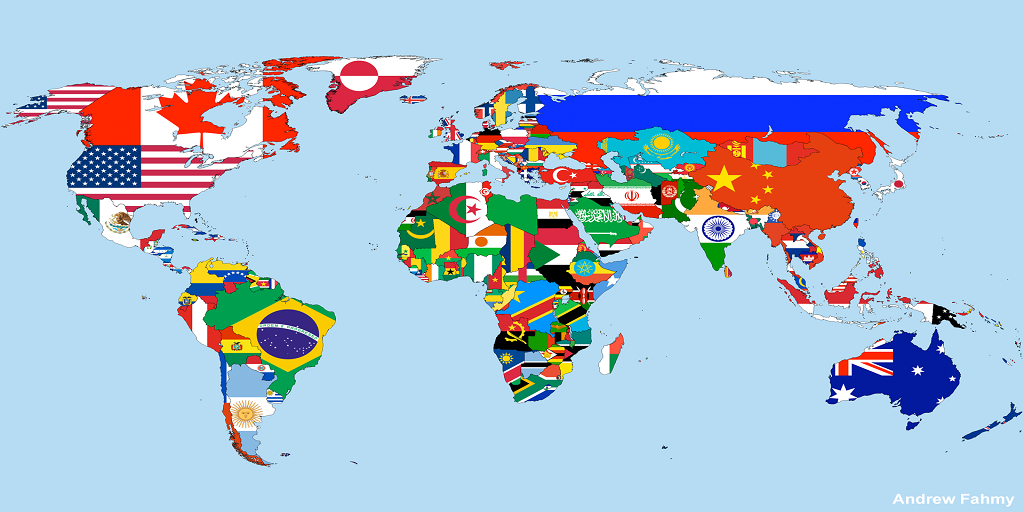
Foreign market entry strategies
May 23, 2019An organisation wishing to “go international” faces three major issues:
i) Marketing – which countries, which segments, how to manage and implement marketing effort, how to enter – with intermediaries or directly, with what information?ii) Sourcing – whether to obtain products, make or buy?
iii) Investment and control – joint venture, global partner, acquisition?
Decisions in the marketing area focus on the value chain. The strategy or entry alternatives must ensure that the necessary value chain activities are performed and integrate
In making international marketing decisions on the marketing mix more attention to detail is required than in domestic marketing.
Examples of elements included in the export marketing mix:
| 1. Product support – Product sourcing – Match existing products to markets – air, sea, rail, road, freight – New products – Product management – Product testing – Manufacturing specifications – Labelling – Packaging – Production control – Market information |
| 2. Price support – Establishment of prices – Discounts – Distribution and maintenance of pricelists – Competitive information – Training of agents/customers |
| 3. Promotion/selling support – Advertising – Promotion – literature – Direct mail – Exhibitions, trade shows – Printing – Selling (direct) – Sales force – Agents commissions – Sale or returns |
| 4. Inventory support – Inventory management – Warehousing – Distribution – Parts supply – Credit authorisation |
| 5. Distribution support – Funds provision – Raising of capital – Order processing – Export preparation and documentation – Freight forwarding – Insurance – Arbitration |
| 6. Service support – Market information/intelligence – Quotes processing – Technical aid assistance – After sales – Guarantees – Warranties/claims – Merchandising – Sales reports, catalogues literature – Customer care – Budgets – Data processing systems – Insurance – Tax services – Legal services – Translation |
| 7. Financial support – Billing, collecting invoices – Hire, rentals – Planning, scheduling budget data – Auditing |
Details on the sourcing element have already been covered in the chapter on competitive analysis and strategy. Concerning investment and control, the question really is how far the company wishes to control its own fate. The degree of risk involved, attitudes and the ability to achieve objectives in the target markets are important facets in the decision on whether to license, joint venture or get involved in direct investment.
Cunningham (1986) identified five strategies used by firms for entry into new foreign markets:
i) Technical innovation strategy – perceived and demonstrable superior products
ii) Product adaptation strategy – modifications to existing products
iii) Availability and security strategy – overcome transport risks by countering perceived risks
iv) Low price strategy – penetration price and,
v) Total adaptation and conformity strategy – foreign producer gives a straight copy.
In marketing products from less developed countries to developed countries point iii) poses major problems. Buyers in the interested foreign country are usually very careful as they perceive transport, currency, quality and quantity problems. This is true, say, in the export of cotton and other commodities.
Because, in most agricultural commodities, production and marketing are interlinked, the infrastructure, information and other resources required for building market entry can be enormous. Sometimes this is way beyond the scope of private organisations, so Government may get involved. It may get involved not just to support a specific commodity, but also to help the “public good”. Whilst the building of a new road may assist the speedy and expeditious transport of vegetables, for example, and thus aid in their marketing, the road can be put to other uses, in the drive for public good utilities. Moreover, entry strategies are often marked by “lumpy investments”. Huge investments may have to be undertaken, with the investor paying a high risk price, long before the full utilisation of the investment comes. Good examples of this include the building of port facilities or food processing or freezing facilities. Moreover, the equipment may not be able to be used for other processes, so the asset specific equipment, locked into a specific use, may make the owner very vulnerable to the bargaining power of raw material suppliers and product buyers who process alternative production or trading options. Zimfreeze, Zimbabwe is experiencing such problems. It built a large freezing plant for vegetables but found itself without a contract. It has been forced, at the moment, to accept sub optional volume product materials just in order to keep the plant ticking over.
In building a market entry strategy, time is a crucial factor. The building of an intelligence system and creating an image through promotion takes time, effort and money. Brand names do not appear overnight. Large investments in promotion campaigns are needed. Transaction costs also are a critical factor in building up a market entry strategy and can become a high barrier to international trade. Costs include search and bargaining costs. Physical distance, language barriers, logistics costs and risk limit the direct monitoring of trade partners. Enforcement of contracts may be costly and weak legal integration between countries makes things difficult. Also, these factors are important when considering a market entry strategy. In fact these factors may be so costly and risky that Governments, rather than private individuals, often get involved in commodity systems. This can be seen in the case of the Citrus Marketing Board of Israel. With a monopoly export marketing board, the entire system can behave like a single firm, regulating the mix and quality of products going to different markets and negotiating with transporters and buyers. Whilst these Boards can experience economies of scale and absorb many of the risks listed above, they can shield producers from information about, and from. buyers. They can also become the “fiefdoms” of vested interests and become political in nature. They then result in giving reduced production incentives and cease to be demand or market orientated, which is detrimental to producers.
Normal ways of expanding the markets are by expansion of product line, geographical development or both. It is important to note that the more the product line and/or the geographic area is expanded the greater will be the managerial complexity. New market opportunities may be made available by expansion but the risks may outweigh the advantages, in fact it may be better to concentrate on a few geographic areas and do things well. This is typical of the horticultural industry of Kenya and Zimbabwe. Traditionally these have concentrated on European markets where the markets are well known. Ways to concentrate include concentrating on geographic areas, reducing operational variety (more standard products) or making the organisational form more appropriate. In the latter the attempt is made to “globalise” the offering and the organisation to match it. This is true of organisations like Coca Cola and MacDonald’s. Global strategies include “country centred” strategies (highly decentralised and limited international coordination), “local market approaches” (the marketing mix developed with the specific local (foreign) market in mind) or the “lead market approach” (develop a market which will be a best predictor of other markets). Global approaches give economies of scale and the sharing of costs and risks between markets.
Entry strategies
There are a variety of ways in which organisations can enter foreign markets. The three main ways are by direct or indirect export or production in a foreign country.

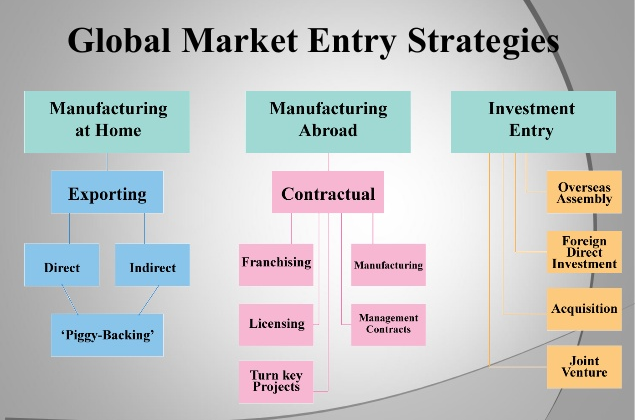
Exporting
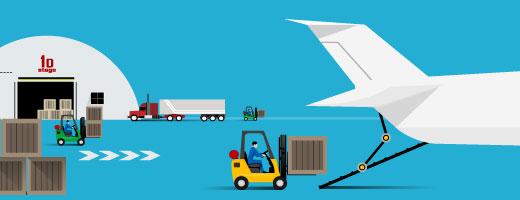
Exporting is the most traditional and well established form of operating in foreign markets. Exporting can be defined as the marketing of goods produced in one country into another. Whilst no direct manufacturing is required in an overseas country, significant investments in marketing are required. The tendency may be not to obtain as much detailed marketing information as compared to manufacturing in marketing country; however, this does not negate the need for a detailed marketing strategy.
The advantages of exporting are:
· manufacturing is home based thus, it is less risky than overseas based
· gives an opportunity to “learn” overseas markets before investing in bricks and mortar
· reduces the potential risks of operating overseas.
The disadvantage is mainly that one can be at the “mercy” of overseas agents and so the lack of control has to be weighed against the advantages. For example, in the exporting of African horticultural products, the agents and Dutch flower auctions are in a position to dictate to producers.
A distinction has to be drawn between passive and aggressive exporting. A passive exporter awaits orders or comes across them by chance; an aggressive exporter develops marketing strategies which provide a broad and clear picture of what the firm intends to do in the foreign market. Pavord and Bogart (1975) found significant differences with regard to the severity of exporting problems in motivating pressures between seekers and non-seekers of export opportunities. They distinguished between firms whose marketing efforts were characterized by no activity, minor activity and aggressive activity.
Those firms who are aggressive have clearly defined plans and strategy, including product, price, promotion, distribution and research elements. Passiveness versus aggressiveness depends on the motivation to export. In countries like Tanzania and Zambia, which have embarked on structural adjustment programmes, organisations are being encouraged to export, motivated by foreign exchange earnings potential, saturated domestic markets, growth and expansion objectives, and the need to repay debts incurred by the borrowings to finance the programmes. The type of export response is dependent on how the pressures are perceived by the decision maker. Piercy (1982) highlights the fact that the degree of involvement in foreign operations depends on “endogenous versus exogenous” motivating factors, that is, whether the motivations were as a result of active or aggressive behaviour based on the firm’s internal situation (endogenous) or as a result of reactive environmental changes (exogenous).
If the firm achieves initial success at exporting quickly all to the good, but the risks of failure in the early stages are high. The “learning effect” in exporting is usually very quick. The key is to learn how to minimise risks associated with the initial stages of market entry and commitment – this process of incremental involvement is called “creeping commitment”.

CASE: Nali Producers – Malawi
Nali group, has, since the early 1970s, been engaged in the growing and exporting of spices. Spices are also used in the production of a variety of sauces for both the local and export market. Its major success has been the growing and exporting of Birdseye chilies. In the early days knowledge of the market was scanty and thus the company was obtaining ridiculously low prices. Towards the end of 1978 Nali chilies were in great demand, yet still the company, in its passive mode, did not fully appreciate the competitive implications of the business until a number of firms, including Lonrho and Press Farming, started to grow and export.
Again, due to the lack of information, a product of its passivity, the firm did not realise that Uganda, with their superior product, and Papua New Guinea were major exporters, However, the full potential of these countries was hampered by internal difficulties. Nali was able to grow into a successful commercial enterprise. However, with the end of the internal problems, Uganda in particular, began an aggressive exporting policy, using their overseas legations as commercial propagandists. Nali had to respond with a more formal and active marketing operation. However it is being now hampered by a number of important “exogenous” factors.
The entry of a number of new Malawian growers, with inferior products, has damaged the Malawian chili reputation, so has the lack of a clear Government policy and the lack of financing for traders, growers and exporters.
The latter only serves to emphasise the point made by Collett, not only do organisations need to be aggressive, they also need to enlist the support of Government and importers.
It is interesting to note that Korey (1986) warns that direct modes of market entry may be less and less available in the future. Growing trading blocs like the EU or EFTA means that the establishing of subsidiaries may be one of the only means forward in future.
Indirect methods offer a number of advantages including:
· Contracts – in the operating market or worldwide
· Commission sates give high motivation (not necessarily loyalty)
· Manufacturer/exporter needs little expertise
· Credit acceptance takes burden from manufacturer.
Piggybacking

Piggybacking is an interesting development. The method means that organisations with little exporting skill may use the services of one that has. Another form is the consolidation of orders by a number of companies in order to take advantage of bulk buying. Normally these would be geographically adjacent or able to be served, say, on an air route. The fertilizer manufacturers of Zimbabwe, for example, could piggyback with the South Africans who both import potassium from outside their respective countries.
Piggybacking is a particularly unique way of entering the international arena. If you have a particularly interesting and unique product or service that you sell to large domestic firms that are currently involved in foreign markets you may want to approach them to see if your product or service can be included in their inventory for international markets. This reduces your risk and costs because you are essentially selling domestically and the larger firm is marketing your product or service for you internationally.
Countertrade
By far the largest indirect method of exporting is countertrade. Competitive intensity means more and more investment in marketing. In this situation the organisation may expand operations by operating in markets where competition is less intense but currency based exchange is not possible. Also, countries may wish to trade in spite of the degree of competition, but currency again is a problem. Countertrade can also be used to stimulate home industries or where raw materials are in short supply. It can, also, give a basis for reciprocal trade.
Estimates vary, but countertrade accounts for about 20-30% of world trade, involving some 90 nations and between US $100-150 billion in value. The UN defines countertrade as “commercial transactions in which provisions are made, in one of a series of related contracts, for payment by deliveries of goods and/or services in addition to, or in place of, financial settlement”.
Countertrade is the modem form of barter, except contracts are not legal and it is not covered by GATT. It can be used to circumvent import quotas.
Countertrade can take many forms. Basically two separate contracts are involved, one for the delivery of and payment for the goods supplied and the other for the purchase of and payment for the goods imported. The performance of one contract is not contingent on the other although the seller is in effect accepting products and services from the importing country in partial or total settlement for his exports. There is a broad agreement that countertrade can take various forms of exchange like barter, counter purchase, switch trading and compensation (buyback). For example, in 1986 Albania began offering items like spring water, tomato juice and chrome ore in exchange for a contract to build a US $60 million fertilizer and methanol complex. Information on potential exchange can be obtained from embassies, trade missions or the EU trading desks.
Barter is the direct exchange of one good for another, although valuation of respective commodities is difficult, so a currency is used to underpin the item’s value.
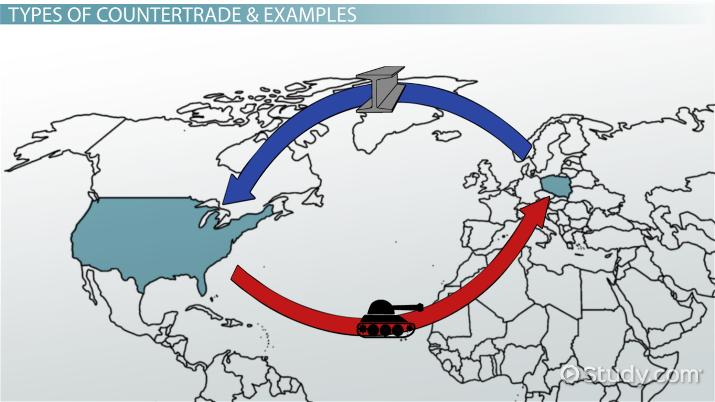
Barter trade can take a number of formats. Simple barter is the least complex and oldest form of bilateral, non-monetarised trade. Often it is called “straight”, “classical” or “pure” barter. Barter is a direct exchange of goods and services between two parties. Shadow prices are approximated for products flowing in either direction. Generally no middlemen are involved. Usually contracts for no more than one year are concluded, however, if for longer life spans, provisions are included to handle exchange ratio fluctuations when world prices change.
Closed end barter deals are modifications of straight barter in that a buyer is found for goods taken in barter before the contract is signed by the two trading parties. No money is involved and risks related to product quality are significantly reduced.
Clearing account barter, also termed clearing agreements, clearing arrangements, bilateral clearing accounts or simply bilateral clearing, is where the principle is for the trades to balance without either party having to acquire hard currency. In this form of barter, each party agrees in a single contract to purchase a specified and usually equal value of goods and services. The duration of these transactions is commonly one year, although occasionally they may extend over a longer time period. The contract’s value is expressed in non-convertible, clearing account units (also termed clearing dollars) that effectively represent a line of credit in the central bank of the country with no money involved.
Clearing account units are universally accepted for the accounting of trade between countries and parties whose commercial relationships are based on bilateral agreements. The contract sets forth the goods to be exchanged, the rates of exchange, and the length of time for completing the transaction. Limited export or import surpluses may be accumulated by either party for short periods. Generally, after one year’s time, imbalances are settled by one of the following approaches: credit against the following year, acceptance of unwanted goods, payment of a previously specified penalty or payment of the difference in hard currency.
Trading specialists have also initiated the practice of buying clearing dollars at a discount for the purpose of using them to purchase saleable products. In turn, the trader may forfeit a portion of the discount to sell these products for hard currency on the international market. Compared with simple barter, clearing accounts offer greater flexibility in the length of time for drawdown on the lines of credit and the types of products exchanged.
Counter purchase, or buyback, is where the customer agrees to buy goods on condition that the seller buys some of the customer’s own products in return (compensatory products). Alternatively, if exchange is being organised at national government level then the seller agrees to purchase compensatory goods from an unrelated organisation up to a pre-specified value (offset deal). The difference between the two is that contractual obligations related to counter purchase can extend over a longer period of time and the contract requires each party to the deal to settle most or all of their account with currency or trade credits to an agreed currency value.
Where the seller has no need for the item bought he may sell the produce on, usually at a discounted price, to a third party. This is called a switch deal. In the past a number of tractors have been brought into Zimbabwe from East European countries by switch deals.
Compensation (buy-backs) is where the supplier agrees to take the output of the facility over a specified period of time or to a specified volume as payment. For example, an overseas company may agree to build a plant in Zambia, and output over an agreed period of time or agreed volume of produce is exported to the builder until the period has elapsed. The plant then becomes the property of Zambia.
Khoury (1984) categorises countertrade as follows:
One problem is the marketability of products received in countertrade. This problem can be reduced by the use of specialised trading companies which, for a fee ranging between 1 and 5% of the value of the transaction, will provide trade related services like transportation, marketing, financing, credit extension, etc. These are ever growing in size.
Countertrade has disadvantages:
· Not covered by GATT so “dumping” may occur· Quality is not of international standard so costly to the customer and trader
· Variety is tow so marketing of wkat is limited
· Difficult to set prices and service quality
· Inconsistency of delivery and specification,
· Difficult to revert to currency trading – so quality may decline further and therefore product is harder to market.

Shipley and Neale (1988) therefore suggest the following:
· Ensure the benefits outweigh the disadvantages· Try to minimise the ratio of compensation goods to cash – if possible inspect the goods for specifications
· Include all transactions and other costs involved in countertrade in the nominal value specified for the goods being sold
· Avoid the possibility of error of exploitation by first gaining a thorough understanding of the customer’s buying systems, regulations and politics,
· Ensure that any compensation goods received as payment are not subject to import controls.
Despite these problems countertrade is likely “to grow as a major indirect entry method, especially in developing countries.
Foreign production
Besides exporting, other market entry strategies include licensing, joint ventures, contract manufacture, ownership and participation in export processing zones or free trade zones.
Licensing
Licensing is defined as “the method of foreign operation whereby a firm in one country agrees to permit a company in another country to use the manufacturing, processing, trademark, know-how or some other skill provided by the licensor”.
It is quite similar to the “franchise” operation. Coca Cola is an excellent example of licensing. In Zimbabwe, United Bottlers have the licence to make Coke.
Licensing involves little expense and involvement. The only cost is signing the agreement and policing its implementation.
Licensing gives the following advantages:
· Good way to start in foreign operations and open the door to low risk manufacturing relationships
· Linkage of parent and receiving partner interests means both get most out of marketing effort
· Capital not tied up in foreign operation and
· Options to buy into partner exist or provision to take royalties in stock.
The disadvantages are:
· Limited form of participation – to length of agreement, specific product, process or trademark
· Potential returns from marketing and manufacturing may be lost
· Partner develops know-how and so licence is short
· Licensees become competitors – overcome by having cross technology transfer deals and
· Requires considerable fact finding, planning, investigation and interpretation.
Those who decide to license ought to keep the options open for extending market participation. This can be done through joint ventures with the licensee.
| Pros | Cons |
|---|---|
| Can reduce risk and be an effective way to finance international expansion. | Your licensing agreement may restrict any future activities, or reveal information to a possible future competitor. |
Joint ventures
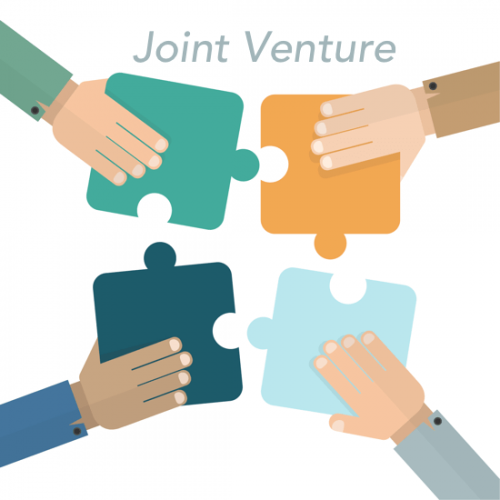
Joint ventures can be defined as “an enterprise in which two or more investors share ownership and control over property rights and operation”.
Joint ventures are a more extensive form of participation than either exporting or licensing. In Zimbabwe, Olivine industries has a joint venture agreement with HJ Heinz in food processing.
Joint ventures give the following advantages:
· Sharing of risk and ability to combine the local in-depth knowledge with a foreign partner with know-how in technology or process· Joint financial strength
· May be only means of entry and
· May be the source of supply for a third country.
They also have disadvantages:
· Partners do not have full control of management
· May be impossible to recover capital if need be
· Disagreement on third party markets to serve and
· Partners may have different views on expected benefits.
If the partners carefully map out in advance what they expect to achieve and how, then many problems can be overcome.
| Pros | Cons |
|---|---|
| Can be a good way to penetrate international markets while reducing risk. | There’s always the possibility of conflict between partners, and potential loss of control by one of the parties. |
| Can allow you to access the international distribution network of the entities you’ve partnered with. |
Ownership
The most extensive form of participation is 100% ownership and this involves the greatest commitment in capital and managerial effort. The ability to communicate and control 100% may outweigh any of the disadvantages of joint ventures and licensing. However, as mentioned earlier, repatriation of earnings and capital has to be carefully monitored. The more unstable the environment the less likely is the ownership pathway an option.
These forms of participation: exporting, licensing, joint ventures or ownership, are on a continuum rather than discrete and can take many formats. Anderson and Coughlan (1987) summarise the entry mode as a choice between company owned or controlled methods – “integrated” channels – or “independent” channels. Integrated channels offer the advantages of planning and control of resources, flow of information, and faster market penetration, and are a visible sign of commitment. The disadvantages are that they incur many costs (especially marketing), the risks are high, some may be more effective than others (due to culture) and in some cases their credibility amongst locals may be lower than that of controlled independents. Independent channels offer lower performance costs, risks, less capital, high local knowledge and credibility. Disadvantages include less market information flow, greater coordinating and control difficulties and motivational difficulties. In addition they may not be willing to spend money on market development and selection of good intermediaries may be difficult as good ones are usually taken up anyway.
| Pros | Cons |
|---|---|
| You have complete control over the day-to-day operations in markets overseas, while at the same time acquiring valuable processes and technologies. | It requires substantial resources, so the exposure to risk is high. |
Once in a market, companies have to decide on a strategy for expansion. One may be to concentrate on a few segments in a few countries – typical are cashewnuts from Tanzania and horticultural exports from Zimbabwe and Kenya – or concentrate on one country and diversify into segments. Other activities include country and market segment concentration – typical of Coca Cola or Gerber baby foods, and finally country and segment diversification. Another way of looking at it is by identifying three basic business strategies: stage one – international, stage two – multinational (strategies correspond to ethnocentric and polycentric orientations respectively) and stage three – global strategy (corresponds with geocentric orientation). The basic philosophy behind stage one is extension of programmes and products, behind stage two is decentralisation as far as possible to local operators and behind stage three is an integration which seeks to synthesize inputs from world and regional headquarters and the country organisation. Whilst most developing countries are hardly in stage one, they have within them organisations which are in stage three. This has often led to a “rebellion” against the operations of multinationals, often unfounded.
Export processing zones (EPZ)
Whilst not strictly speaking an entry-strategy, EPZs serve as an “entry” into a market. They are primarily an investment incentive for would be investors but can also provide employment for the host country and the transfer of skills as well as provide a base for the flow of goods in and out of the country. One of the best examples is the Mauritian EPZ, founded in the 1970s.
| CASE: The Mauritian Export Processing Zone
Since its inception over 400 firms have established themselves in sectors as diverse as textiles, food, watches. And plastics. In job employment the results have been startling, as at 1987, 78,000 were employed in the EPZ. Export earnings have tripled from 1981 to 1986 and the added value has been significant- The roots of success can be seen on the supply, demand and institutional sides. On the supply side the most critical factor has been the generous financial and other incentives, on the demand side, access to the EU, France, India and Hong Kong was very tempting to investors. On the institutional side positive schemes were put in place, including finance from the Development Bank and the cutting of red tape. In setting up the export processing zone the Mauritian government displayed a number of characteristics which in hindsight, were crucial to its success. · The government intelligently sought a development strategy in an apolitical manner · It stuck to its strategy in the long run rather than reverse course at the first sign of trouble · It encouraged market incentives rather than undermined them · It showed a good deal of adaptability, meeting each challenge with creative solutions rather than maintaining the status quo · It adjusted the general export promotion programme to suit its own particular needs and characteristics. · It consciously guarded against the creation of an unwieldy bureaucratic structure. |
Franchising
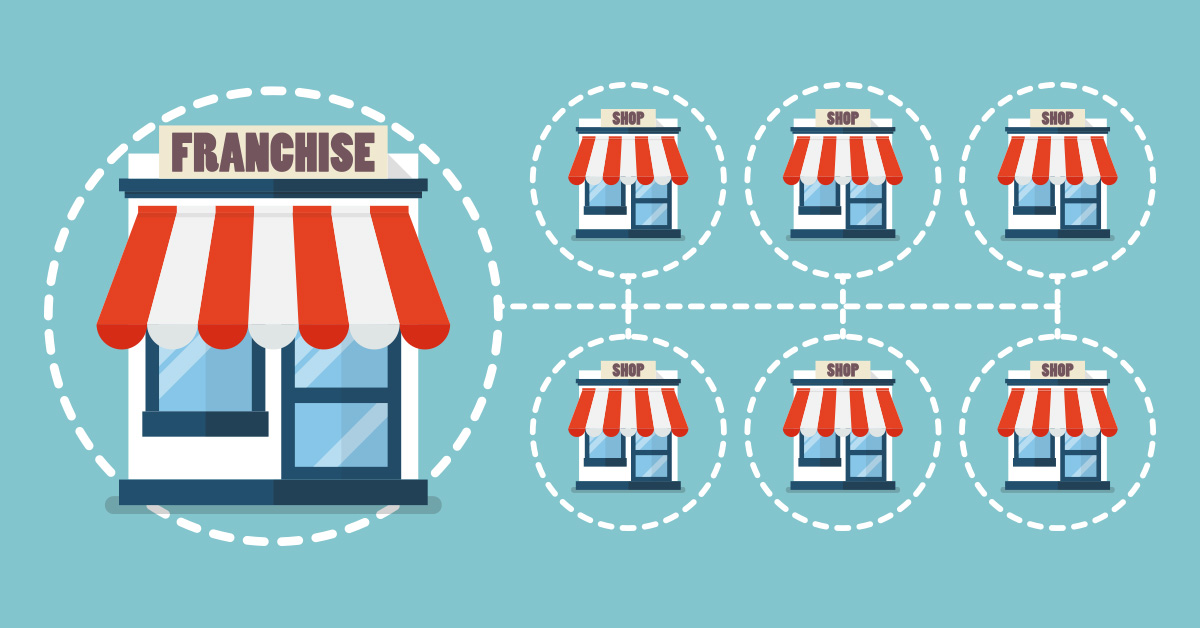
Franchising is when the owner of the business providing a product and/or service (the franchiser) assigns to independent people (the franchisees) the right to market and distribute the franchiser’s products and/or service, and to use the business name for a specified period of time, and under specified conditions.
| Pros | Cons |
|---|---|
| It’s a low-cost, low-risk mode of entry into new markets allowing you to use the cultural knowledge and know-how of local managers. | As a franchiser, you’re obliged to continue to support the franchisee after the initial one-time transfer of property is complete. |
Strategic alliances
A strategic alliance is when two or more entities cooperate to achieve a strategic goal. Depending on the goals, alliances can be formed between a company and its suppliers, customers, or even its competitors in some instances, for short, medium or long-term periods.
| Pros | Cons |
|---|---|
| You can share costs and utilise member strengths. | There’s risk of conflict between partners, not to mention the creation of a future local or international competitor. |
Turnkey Projects
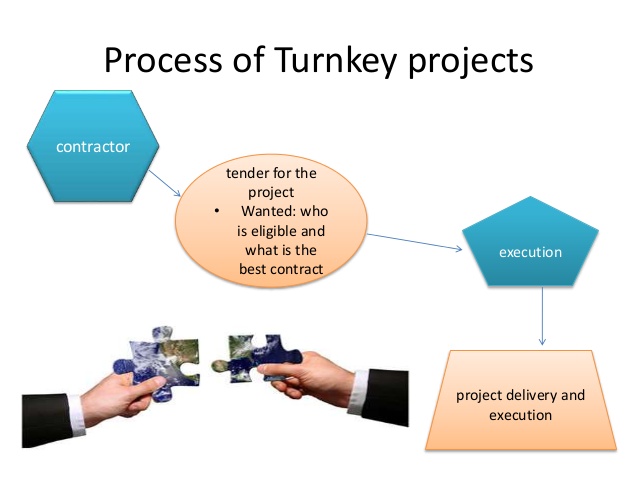
Turnkey projects are particular to companies that provide services such as environmental consulting, architecture, construction and engineering. A turnkey project is where the facility is built from the ground up and turned over to the client ready to go – turn the key and the plant is operational. This is a very good way to enter foreign markets as the client is normally a government and often the project is being financed by an international financial agency such as the World Bank so the risk of not being paid is eliminated.
Greenfield Investments
Greenfield investments require the greatest involvement in international business. A greenfield investment is where you buy the land, build the facility and operate the business on an ongoing basis in a foreign market. It is certainly the most costly and holds the highest risk but some markets may require you to undertake the cost and risk due to government regulations, transportation costs, and the ability to access technology or skilled labour.
Selling online
There are a few different approaches to selling online. You can:
- set up your own website in the export destination country which incorporates an online store, known as Business-to-Consumer
- sell your product wholesale to major eCommerce sites, which will then manage the marketing, sales and distribution to customers, known as Business-to-Business
- set up an online store within a major eCommerce site, known as Business-to-Consumer
- sell your product through a third-party store or online supermarket, known as Business-to-Business-to-Consumer.

